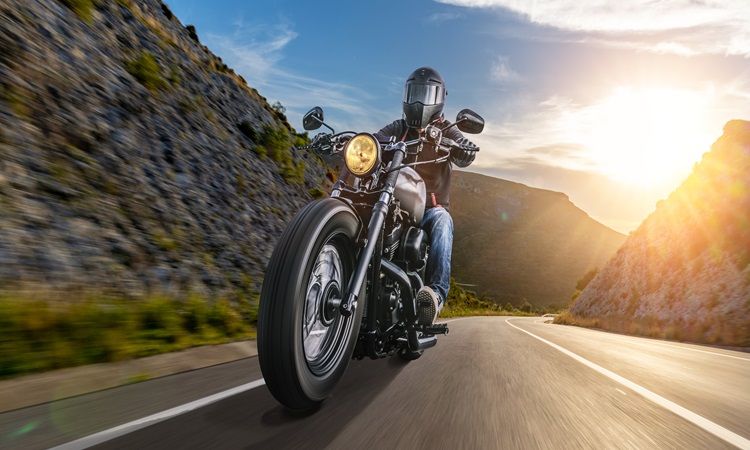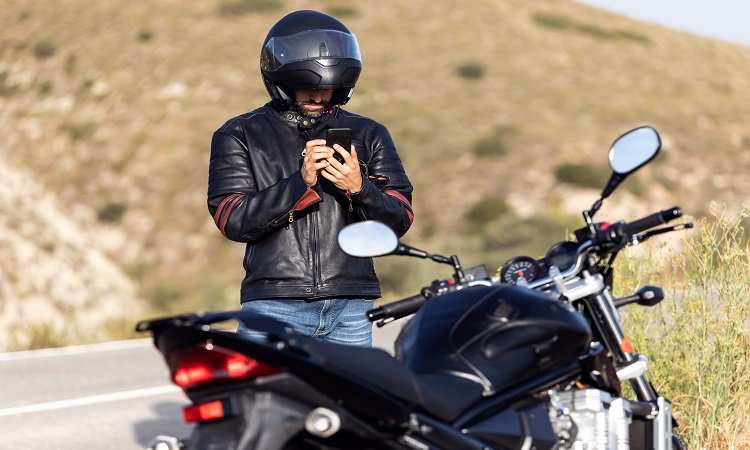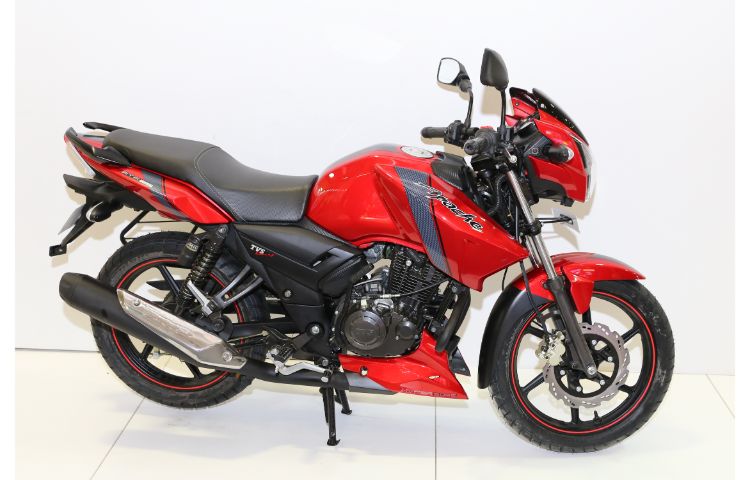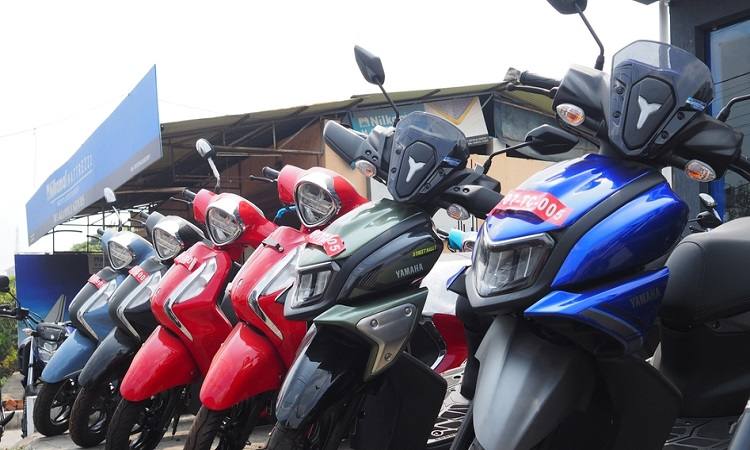Annual Premium starting
at just ₹538*2000+ Cashless
GaragesˇEmergency Roadside
Assistance°°IDV in Bike Insurance

IDV is basically the market value of your vehicle. It is only valid under the comprehensive bike insurance policy. Insured Declared Value is the value of your bike in the market after calculating its depreciation. You can calculate your bike’s IDV by subtracting the depreciation on the vehicle’s part from its current market value.
Can You Change Your Two-Wheeler's IDV Value?
Insurance companies allow individuals to choose a customized vehicle IDV. There are a couple of ways to change the value of your twp-wheeler.
You are entitled to substantial compensation if your two-wheeler has beyond-repair damage. You can talk to your insurer and ask them to increase the IDV. However, it will increase the premium that you would have to pay.
You can reduce the IDV of your two-wheeler if you think the base value is high. You can talk to your insurer and ask them to reduce your IDV. However, the claim amount will reduce as well. The only reason to reduce the IDV can be if you want to decrease the premium on your two-wheeler.
You must know that the own damage bike insurance premium is around 2 to 3 per cent of the IDV. Thus, changing the IDV will not result in a substantial change in the premium. You must keep your IDV at the maximum to ensure maximum financial security.
IDV Value and Depreciation In Five Years and Above Aged Two-Wheelers
The two-wheeler depreciation calculator includes the depreciation rate and the age of the vehicle—the depreciation rate increases with the age of the two-wheeler. In a nutshell, the value of your two-wheeler decreases as its age increases. The two-wheeler depreciation calculator for vehicles aged above 5 years includes the condition of its parts. The IDV in two wheeler insurance is adjusted according to the materials used and is calculated as an average overall. If the two-wheeler above 5 years is obsolete, the insurer and the policyholder can mutually decide on a figure. Some insurers hire surveyors to determine the IDV in bike insurance.
As a bike owner, you would know that your bike is a depreciating asset. Every year, due to its wear and tear, its market value decreases. The rate at which a vehicle depreciates is decided by the Insurance Regulatory and Development Authority of India (IRDAI).
Two-Wheeler IDV: Rates of Depreciation
| 6 months and below | 5% |
| 6 months to 1 year | 15% |
| 1-2 years | 20% |
| 2-3 years | 30% |
| 3-4 years | 40% |
| 4-5 years | 50% |
| 5+ years | Mutually decided by insurer and policyholder |
For bikes that are more than 5 years old, the IDV is determined after an agreement between you and the insurer. The insurance company will determine the premium based on your bike’s make, model, variant, its age, availability of spare parts, previous claims and the overall condition of your bike.
IDV Calculator for Bike
It is one of the most time-saving and useful things to use online calculators for determining your two-wheeler's IDV. The selling price set by the manufacturer minus depreciation gets you the IDV for your two-wheeler. You can use an online calculator and determine the right market value and the premium amount. Registration costs and insurance are not included in the Insured Declared Value (IDV). You have to pay an extra cost for parts that are not factory-fitted.
How to Calculate IDV in Two-Wheeler Insurance

The market value of a vehicle is the IDV calculator for two-wheelers. The market value of a two-wheeler keeps changing with time, and IDV in two wheeler insurance includes the rate of depreciation. The premium of your two-wheeler is determined by its IDV . Your bike's market value calculates IDV in bike insurance. It is calculated after calculating the depreciation.
For example, you buy a new bike for one lakh (excluding accessories, insurance, tax, and registration). The IDV of your bike will be one lakh as it is new. The bike's IDV will reduce with time as the value of your bike will depreciate. So, if your bike's market value is Rs. 75,000 after two years, the IDV will also be Rs. 75,000. The manufacturer's price is the price at which depreciation is calculated in IDV. It is not the value at which you can personally sell your two-wheeler. Someone might offer you Rs. 85,000. However, the market value will stay at Rs. 75,000.
IDV vs Premium in IDV on Two-Wheeler Insurance
When it comes to two-wheeler insurance, the IDV plays an important role. IDV stands for Insured Declared Value of your vehicle. It is the highest amount that your bike insurance company will pay in case your bike is declared to be ‘total loss’ after an accident, or if your bike is stolen.
Simply put, the IDV of your bike is like the market value of your bike. When you buy a new insurance policy or renew your existing one, the premium is determined by the IDV. Your insurance company, based on the age of your vehicle, gives you a price range from which you can choose the most suitable IDV.
• Higher IDV = Higher Premium
When you choose a higher IDV, it means that in case of loss of your bike, your insurer will have to pay you a higher compensation. Because of this increased liability, you are charged a higher premium.
• Lower IDV = Lower Premium
When you choose a higher IDV, it reflects that you are ready to settle for a lower compensation in case of theft or total loss of your vehicle. Therefore, the premium you pay will be comparatively less.
So, when it comes to IDV vs premium, you need to make an informed decision as the IDV will determine the premium as well as the compensation. If you live in an area prone to accidents, it would be better to opt for a higher IDV. However, if you live in a safer region, have been a careful driver, and want affordable coverage, then a lower IDV might be adequate.
Factors Affecting the (IDV) Insured Declared Value
Two-Wheeler IDV: Rates of Depreciation
| 6 months and below | 5% |
| 6 months to 1 year | 15% |
| 1-2 years | 20% |
| 2-3 years | 30% |
| 3-4 years | 40% |
| 4-5 years | 50% |
| 5+ years | Mutually decided by insurer and policyholder |
Importance of High IDV In Bike Insurance
A higher IDV means higher financial protection for your two-wheeler. The following are some reasons why you should have a higher IDV for your two -wheeler insurance:

Financial Assistance if Your Two Wheeler Suffers Massive Accident Damage
Minor accidents can lead to a cracked windshield or a broken tail light. However, a massive accident can lead to your two-wheeler's engine being totaled. You cannot get a ruined engine repaired at the nearest garage. Damage of this magnitude requires financial assistance from your insurer, and a high IDV will ensure you get compensated handsomely for the repairs.

Financial Compensation For Theft
Individuals often lower their IDV because they feel they will never get into an accident. However, road accidents aren't the only thing that can occur. There are possibilities of bike theft as well. Moreso, if you own a high-end two-wheeler, the chances of theft increase. Another factor is an open parking space. A higher IDV ensures you are financially secure in case of theft of your two-wheeler.

Mental Peace
You can stay peaceful knowing your two-wheeler is covered and you are financially secure if you have a higher IDV. Even if something wrong happens to your vehicle, your insurer will compensate you for the loss. It will keep you free from worries and financially secure.
It is best to keep your IDV as high as possible, as a lower IDV may not be enough to cover damages in case you have to get compensation. Instead of thinking about bike insurance premiums, one should think more about financial security and safety.
Impact of IDV on Bike Insurance Premium
Insured Declared Value or IDV has a major impact on determining the premium of the bike insurance policy. This is how picking a higher or lower IDV affects your two-wheeler insurance policy premium:
Impact of picking a higher IDV on bike insurance premium
When purchasing comprehensive bike insurance, many insurers offer the option to edit the Insured Declared Value or IDV of the vehicle in the policy. If you pick a higher IDV, it signifies a higher potential claim payout by the insurer during claim settlements in case the bike gets stolen or damaged beyond repair. However, as this raises the insurer’s financial liabilities, the premium charged by them is also higher to minimise their risk.
Impact of picking a lower IDV on bike insurance premium
On the other hand, if you pick a lower Insured Declared Value or IDV with your bike insurance policy, it will mean that you will receive a lower payout during claim settlement in the event your bike gets stolen or damaged beyond repair. As the insurer’s financial liabilities in this case are lower, the premium charged for the bike insurance policy is also reduced.
Example: Suppose you are buying a comprehensive bike insurance policy for your two-wheeler. With no extra coverage chosen, you pick the highest available IDV for it, let’s just say INR 73,000. In this case, the annual premium charged by the insurer is INR 1,113 (+GST). However, if you pick a lower IDV, let’s assume it's INR 57,000, the annual premium charged by the insurer for the same policy can go down to INR 1,026 (+GST).
In the first scenario, by picking a higher IDV, you are getting more coverage but at an increased cost. In the second scenario, by picking a lower IDV, the policy premium is lowered, but the coverage is also reduced. Note that this example is for illustrative purposes only.
Consequences of Choosing the Wrong IDV
It is important that you do your due diligence and evaluate your coverage needs when picking IDV in your bike insurance policy. Choosing the correct IDV is vital in order to receive proper coverage, ensure lower out-of-pocket expenses, and maintain a budget. Here are some consequences of choosing the wrong IDV:
• Picking a lower IDV than required or Underinsurance
1. Reduced compensation:
IDV is a key factor that insurers consider when offering compensation in case of the insured bike’s theft or total loss. So, by choosing a lower IDV, the claim payout offered by the insurer may not be sufficient to get the bike replaced at its current market value.
2. Increased out-of-pocket expenses:
As choosing a lower IDV results in reduced compensation, it increases out-of-pocket expenses. For instance, if your bike gets stolen and you want to replace it with a bike of similar value, you will have to spend extra from your pocket, as the received claim amount will not be sufficient to cover it.
• Picking a higher IDV than required or Over-insurance
1. Higher premium payable:
Picking a higher Insured Declared Value or IDV of your bike will increase the premium of the bike insurance policy. So, to get that policy and maintain it year after year, you will have to spend a lot more than you would have for a policy with a more accurate IDV selection.
2. Overpaying for no extra payout:
If the selected Insured Declared Value (IDV) exceeds the bike’s actual market value, you can end up paying more for your insurance than you actually need. However, in the event of an actual insurance claim, instead of this inflated IDV, the insurer will likely take into account and compensate based on the bike’s actual market value or depreciated value. This means that the additional sum you paid for your bike insurance with a higher IDV will yield no increased claim benefit.
Hence, it is very crucial to choose the right IDV of your bike when buying bike insurance. Spend some time on research and try to find the correct IDV that ensures affordable insurance premiums and adequate coverage.
IDV During Policy Renewal
When the time of policy renewal comes, most insurers usually adjust the IDV by taking the previous IDV into account and reducing it as per the IRDAI-provided depreciation schedule. However, as the policyholder, you don’t have to go along with the adjusted IDV for the renewed insurance policy as proposed by the provider. In order to ensure proper financial coverage within the budget, make sure to do your due diligence once again. Research the current market value of your bike and compare it with the new proposed IDV. While at it, you should also see if the premium charged for the own damage component of the bike insurance has been decreased by the insurer accordingly. Note that IDV only impacts the premium imposed on the own damage component of the bike insurance and not the third-party damage component. The third-party bike insurance premium is fixed by IRDAI and depends on the engine’s cubic capacity (cc).
As per your evaluation, if you see that the proposed IDV for the renewed plan is too much or too little when compared to your bike’s market price, you should connect with the insurer to revise it in the policy. Generally, most insurance providers allow a range of 15% above or below when it comes to choosing the Insured Declared Value of your bike. It is very crucial that you pick the correct IDV of your bike during bike insurance policy renewal to ensure adequate coverage at affordable premiums.
Tips for Selecting the IDV
Selecting the right IDV is crucial; the tips given below can be helpful in making a well-informed decision. Read on:
• When you buy or renew your insurance, you will have to choose the IDV. Make sure to review the value carefully.
• Try to choose a suitable IDV. While a lower premium may sound tempting, think of the long term.
• For a bike older than 5 years, your insurer may rely on several other factors to determine the IDV.

Across India
Two Wheeler Insurance for Popular Brands
Two Wheeler Insurance for Popular Indian Models
Read the Latest IDV Two Wheeler Insurance Blogs
FAQ's for Insurance Declared Value (IDV) Bike Insurance Cover
6 months to 1 year: 15%
1-2 years: 20%
2-3 years: 30%
3-4 years: 40%
4-5 years: 50%
5+ years: Mutually decided by insurer and policyholder
- The premium amount of your insurance plan would reduce.
- It would help you in saving money on your two-wheeler insurance plan.
- But, the sum insured of your insurance plan would get reduced.
- Thus, you would get lesser compensation in the event of total damage or loss of your insured bike.
Popular Search
- Bike Insurance
- Third Party Bike Insurance
- Zero Depreciation Bike Insurance
- Own Damage Bike Cover
- Comprehensive Bike Insurance
- Electric Bike Insurance
- Bike Insurance Calculator
- Bike Insurance Blogs
- Car Insurance
- Car Insurance Blogs
- Travel Insurance
- Travel Insurance Blogs
- Health Insurance
- Health Insurance Articles
Awards & Recognition
Your Two Wheeler Insurance is just a few steps away!

Premium starts
at ₹538
2000+ Cashless
Network Garages
















 Health Insurance
Health Insurance  Travel Insurance
Travel Insurance  Car Insurance
Car Insurance  Cyber Insurance
Cyber Insurance  Critical Illness Insurance
Critical Illness Insurance
 Pet Insurance
Pet Insurance
 Bike/Two Wheeler Insurance
Bike/Two Wheeler Insurance  Home Insurance
Home Insurance  Third Party Vehicle Ins.
Third Party Vehicle Ins.  Tractor Insurance
Tractor Insurance  Goods Carrying Vehicle Ins.
Goods Carrying Vehicle Ins.  Passenger Carrying Vehicle Ins.
Passenger Carrying Vehicle Ins.  Compulsory Personal Accident Insurance
Compulsory Personal Accident Insurance  Travel Insurance
Travel Insurance  Rural
Rural 










